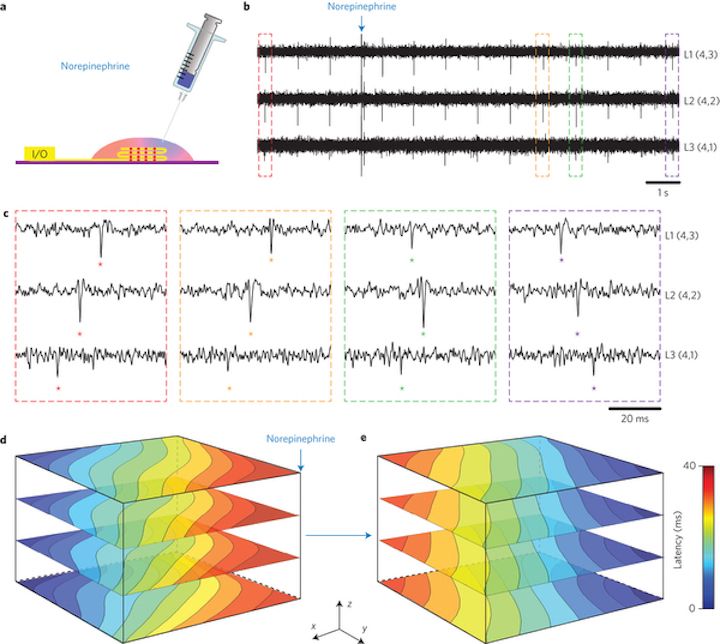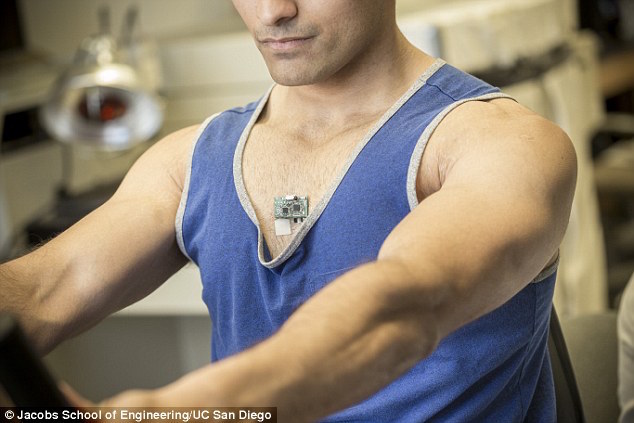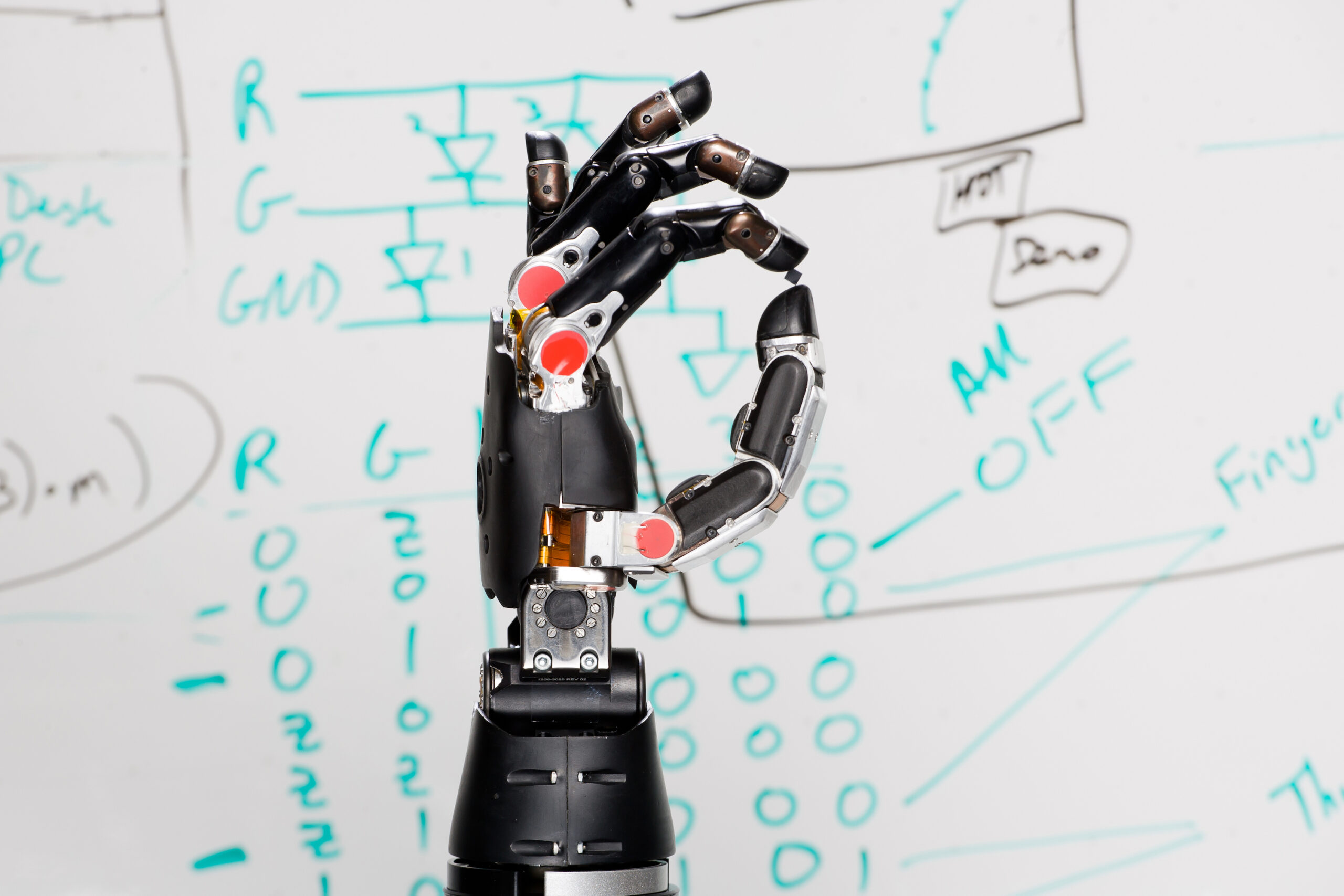Scientist-led conferences at Harvard, Stanford and MIT
-

Chest/wrist wearable system predicts, aims to prevent, asthma attacks
North Carolina State researchers are developing a multi-sensor wearable monitoring system meant to predict and prevent asthma attacks. A chest-worn patch track one’s respiratory rate, skin impedance and wheezing in the lungs. A wristband monitors volatile organic compounds and ozone in the air, ambient humidity, and temperature, as well as a a wearer’s movements, heart rate…
-

“Artificial pancreas” uses sensor + app monitoring system
University Hospital of Montpellier researchers, led by Eric Renard, are developing a sensor/app “artificial pancreas” system for diabetics. The sensor continuously monitors glucose. The data is sent to a phone, where an algorithm calculates insulin needed, and to a pump, which then delivers the correct amount of insulin. So far, the system has only been…
-

Electronic scaffold replaces damaged tissue, stimulates heart
Charles Lieber and Harvard colleagues have designed nanoscale electronic scaffolds, seeded with cardiac cells to produce a “bionic” patch to replace damaged cardiac tissue. The flexible electronics can also electrically stimulate the heart, and change the frequency and direction of signal propagation, as tissue feedback is continuously monitored. Instead of being located on the skin’s…
-

App + wearable to quantify mindfulness
Apple’s Breathe meditation app follows the recent trend of using wearables to quantify mindfulness and improve mental health. Every four hours (while wearing the Apple Watch) Breathe reminds one to inhale and exhale for one to five minutes. Concentric circles can be watched as they shift on the screen, or a wearer can respond to…
-

Mobile 3D ultrasound speeds brain injury diagnosis
University of Aberdeen researchers are developing software to create 3-D models of soldiers brains while on location, which is then sent to an expert for immediate diagnosis. The software is designed to guide a medic with basic ultrasound training to produce as detailed a scan of the brain. The ultrasound image of the brain is…
-

Vivek Wadhwa interview at Wearable Tech + Digital Health SF 2016
ApplySci was delighted to welcome academic, researcher, writer, serial entrepreneur and humanitarian Vivek Wadhwa as a keynote speaker at our recent Wearable Tech + Digital Health San Francisco conference. Attached is an interview, by StartUp Health’s Unity Stoakes, were Vivek discussed advances in technology and urged entrepreneurs to focus on healthcare developments that can solve…
-

Contact lens/eyeglass system monitors blood sugar, dispenses drugs
Pohang University’s Sae Kwang Han and Do Hee Keum have developed a contact lens/ eyeglass combination to monitor diabetes and dispense drugs as needed. The glasses wirelessly power and communicate with the drug-releasing lens, that monitors glucose concentration in tears. An LED alarm lights up when sugar levels are very high. The lens can be worn for…
-

Wearable detects cardiac arrest, notifies emergency services
iBeat is a wearable emergency response system that continuously monitors the heart. Meant for seniors, it detects cardiac arrest in real time, provides alerts, and sends regular updates to caregivers. If cardiac arrest is detected, the wearer receives a call within 10 seconds. If he/she cannot be reached, an emergency contact and emergency medical services…
-

Wearable patch simultaneously monitors biochemical, electric signals
Joe Wang and Patrick Mercier of UCSD have developed a flexible, wearable, patch that monitors both biochemical and electric signals. Most wearables only measure one parameter, such as steps or heart rate, and few measure chemical signals. The Chem-Phys patch records EKG signals, and tracks lactate levels, marking physical effort, in real time. It is worn on…
-

Algorithm to help computers reason, imagine like humans?
Vicarious is developing a neural network algorithm designed to process data in a way that is similar to a human brain — giving it a computer “imagination.” The company considers its work superior to current Deep Learning processes, as they claim it includes more features that appear in biology — including the ability to envision what the…
-

Tiny, ingestible robot can deliver medicine, patch wounds, remove objects
Daniela Rus and MIT, University of Sheffield, and Tokyo Institute of Technology colleagues have developed an ingestible origami robot designed to patch wounds, deliver medicine or remove foreign objects from a person’s stomach. The tiny robot, made of pig intestines, can unfold itself from a swallowed capsule. Steered by a doctor using external magnetic fields, the “microsurgeon”…
-

Thought controlled prosthetic arm has human-like movement, strength
This week at the Pentagon, Johnny Matheny unveiled his DARPA developed prosthetic arm. The mind-controlled prosthesis has the same size, weight, shape and grip strength of a human arm, and, according to Matheny, can do anything one can do. It is, by all accounts, the most advanced prosthetic limb created to date. The 100 sensor arm…
Got any book recommendations?